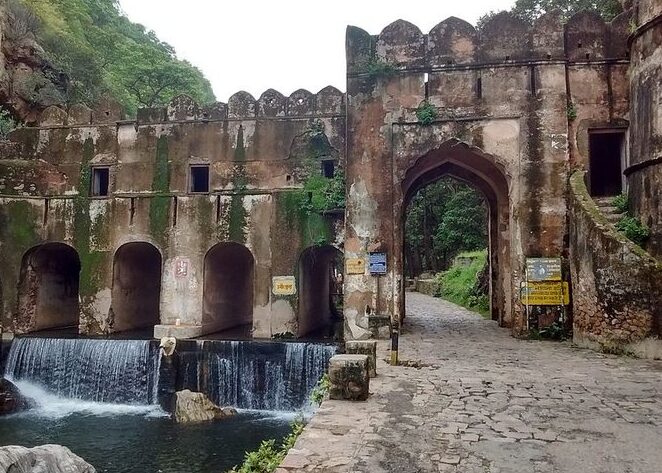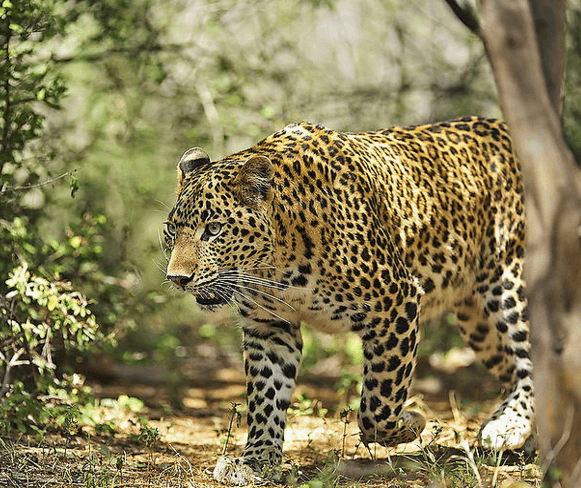Located in Rajasthan, the Ranthambore Tiger Reserve is a symbol of India’s dedication to protecting its natural resources. This beautiful reserve covers an area of more than 1,334 square kilometers. It is a refuge for both wildlife photographers and environment lovers. In this travel blog, we will explore the beauty of this place so that your trip here can become memorable.
Flora and Fauna
The beautiful greenery of the many plants catches your attention as you go through the reserve. Numerous species find the grassy meadows and deciduous woodlands to be the perfect home. While seeing the magnificent Bengal tiger is unquestionably the highlight, the reserve is also home to a wide variety of other wildlife, such as sambar deer, leopards, sloth bears, and several bird species.
Safari Adventures

Going on safari within the reserve is a captivating experience. Visitors may get up close and personal with the wild beauty of the environment and its people thanks to the open-roofed jeeps and canters. The excitement of seeing a tiger in its environment, moving silently through the undergrowth, is an unmatched experience that has guests on the edge of their seats.
Historical Marvels

Apart from its abundant fauna, Ranthambore also has a rich historical past that contributes to its allure. With its imposing 10th-century structure, the famous Ranthambore Fort dominates the reserve and provides sweeping views of the surroundings. A distinctive setting for exploration is produced by the blending of history and environment.
Tiger Conservation
The reserve’s many actions make clear that protecting tigers is its main priority. The number of tigers has significantly increased as a consequence of diligent efforts to monitor and safeguard these amazing animals. The reserve’s dedication to protecting this endangered species is shown by the triumphant recovery tales of its saved tigers.
Local Culture and Traditions
Discovering the surrounding area of Ranthambore offers a window into the dynamic local way of life. The neighboring villages provide a window into the rich cultural diversity of the area with their classic Rajasthani architecture and gracious hospitality. Engaging with the residents reveals a close connection between the people and the animals that share this environment.
Best Time to Visit
A satisfying visit to Ranthambore depends on picking the ideal time of year. October to June is when people may visit the reserve, however, because of the dry weather, April and May are the best months to see tigers. October to March, when it’s colder outside, provides a pleasant temperature for exploring.
Conservation Challenges
Even though Ranthambore has made great progress towards tiger protection, it still needs to resolve some issues. To maintain the sustainability of this special environment, a careful balance between human activity and animal preservation needs ongoing monitoring and adaptation solutions.
Wildlife Photography

Ranthambore is a fantastic canvas for photographers who love what they do. Intense chances to capture breathtaking moments abound due to the varied species and the interplay of light and shadow via the thick forest. Waiting for the ideal image, whether it’s a lazy leopard perched on a tree limb or a tiger in the mirror, demands patience.
Accommodation Options
Numerous lodging options, from luxurious hotels to affordable lodges, satisfy the wide range of traveler interests. If you want to stay close to the reserve, you may have an immersive experience, with the sounds of the animals providing a calming soundtrack for your nights.
Conclusion
Nature lovers and animal conservationists are drawn to the Ranthambore Tiger Reserve. Its unique fusion of local culture, history, and wildlife makes it an unforgettable travel destination. Ranthambore provides an amazing trip into the heart of the wild, regardless of your interests in history, animals, or photography.











